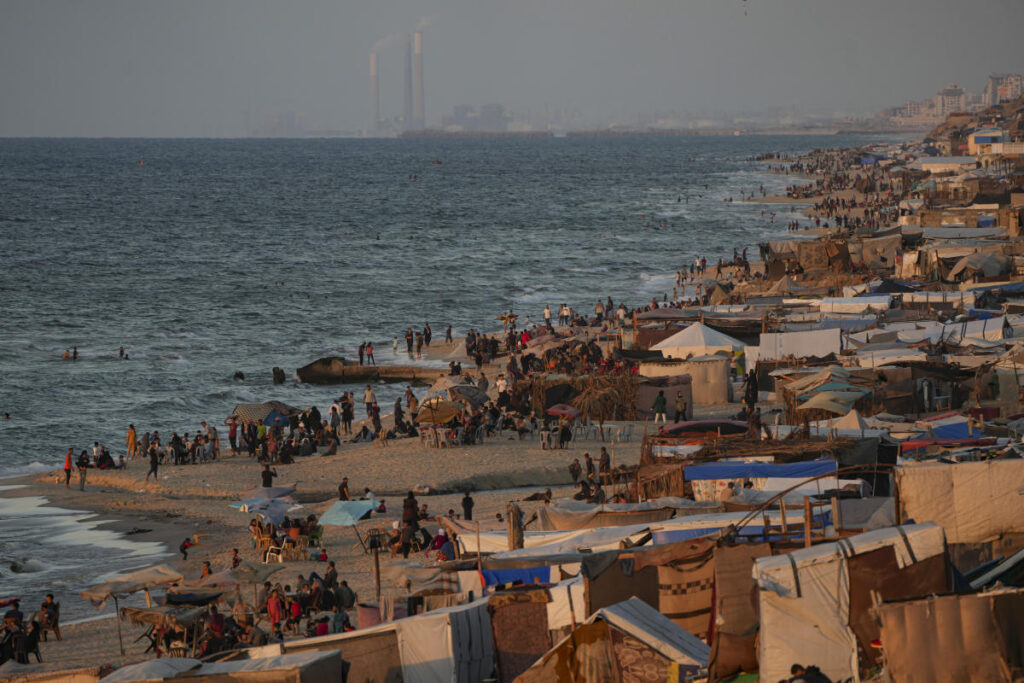The humanitarian situation in Gaza is reaching critical levels, dramatically exacerbated by the ongoing military offensive by Israel, leading to a significant decline in aid entering the territory. Recent reports from U.N. humanitarian officials indicate that the flow of essential supplies has dwindled to the lowest level in months, particularly in northern Gaza, where Israel has intensified its operations. U.N. deputy spokesperson Farhan Haq highlighted these alarming developments, revealing that the main crossings into northern Gaza have been entirely closed since October 1, effectively cutting off food and other pivotal resources. As a result, over 400,000 individuals still residing in the northern region are facing increasing pressure from the intensifying conflict, with many being forced to contemplate relocating south for safety.
The situation is further complicated by ongoing lawlessness within Gaza, which poses significant barriers to the timely delivery of humanitarian relief. The U.N. has documented incidents where supplies meant for aid have been pilfered from trucks, coupled with an alarming rise in attacks against humanitarian workers and vehicle drivers. These threats, compounded by a combination of military actions, limited border crossings, and the slow response in granting Israeli clearances for aid convoys, have rendered the delivery of assistance challenging. Additionally, Michael Fakhri, the U.N. independent investigator focused on the right to food, has openly criticized Israel’s actions, characterizing them as a “starvation campaign” against the Palestinian population, a claim that has been firmly denied by the Israeli government.
In response to the U.N. reports, the Israeli military agency, COGAT, has insisted that it continues to facilitate the entry of humanitarian aid into Gaza, claiming that provisions are set to flow into northern areas shortly. There remains a stark division in narratives surrounding the aid situation, with Israel maintaining that it has not obstructed the delivery of essential goods, while the U.N. paints a much bleaker picture of the reality on the ground. The origins of the current conflict date back to the violent assault by Hamas militants on October 7, which resulted in approximately 1,200 deaths in Israel and a subsequent military offensive that has led to a staggering toll in Gaza, with local health authorities reporting over 42,000 Palestinian deaths and massive displacements across the territory.
As a result of this prolonged violence, Gaza’s infrastructure is in dire straits, particularly its healthcare system. Notably, the humanitarian organization MedGlobal has expressed grave concerns over the collapsing medical facilities in northern Gaza, which are struggling to accommodate the influx of injured patients. Three key hospitals — Kamal Adwan, Al-Awda, and the Indonesian Hospital — have been ordered to evacuate by Israeli authorities and are increasingly at risk of running out of essential resources, including fuel. Dr. Hussam Abu Safiya, the director of Kamal Adwan Hospital, has reported severe overcrowding in intensive care units and issued urgent warnings regarding the potential worsening of medical services if essential supplies are not delivered soon.
Throughout the territory, the U.N. World Food Program has reported significant disruptions in its ability to provide food parcels to over a million Palestinians due to constrained access stemming from the ongoing conflict. In the north, vital food distribution centers, kitchens, bakeries, and other facilities are facing the imminent threat of closure under the ongoing military operations. This dire scenario illustrates the broader humanitarian crisis unfolding in the region, with basic necessities such as food becoming increasingly scarce. In spite of these challenges, U.N. agencies like UNRWA are making attempts to distribute essential food items, including bread and meals, to designated shelters in an effort to address the immediate needs of those affected.
Given the scale of humanitarian distress, the international community is urged to pay close attention to the deteriorating situation in Gaza and to reassess the policies that may be exacerbating the crisis. Unimpeded access to humanitarian aid is vital for the survival of the many individuals facing dire circumstances due to the violence and instability in the region. With over 90% of Gaza’s population displaced and thousands facing life-threatening conditions, a united and urgent response is essential to alleviate suffering and prevent further loss of life. The complex interplay of military actions, humanitarian needs, and international relations will require substantial diplomatic efforts to mediate a resolution and foster a sustainable path forward for the people of Gaza.

